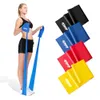
Here’s an abs workout you can do using one of the best resistance bands for home workouts and an exercise mat. Whether exercising at home, traveling, or in the gym, you can still strengthen your core and work up a sweat without heavy weights.
To do the five-move routine, choose a band that offers medium to heavy resistance — the thicker the band, the more resistance you’ll get. If you have a few options, an activation loop and a power band are your best bets.
Below, I cover how to do the five resistance band exercises, the benefits of strengthening your core with a band and ways to scale the moves to your ability. Get ready for a midsection melter.
What are the 5 resistance band exercises for building your abs?
Each ab exercise also targets different parts of the body, including various core muscles, the hip flexors, the lower back and the glutes. All these muscle groups are responsible for stability, proper posture, balance and coordination, so building strength in these areas should be a priority, especially as you age.
1. Resistance band plank jacks
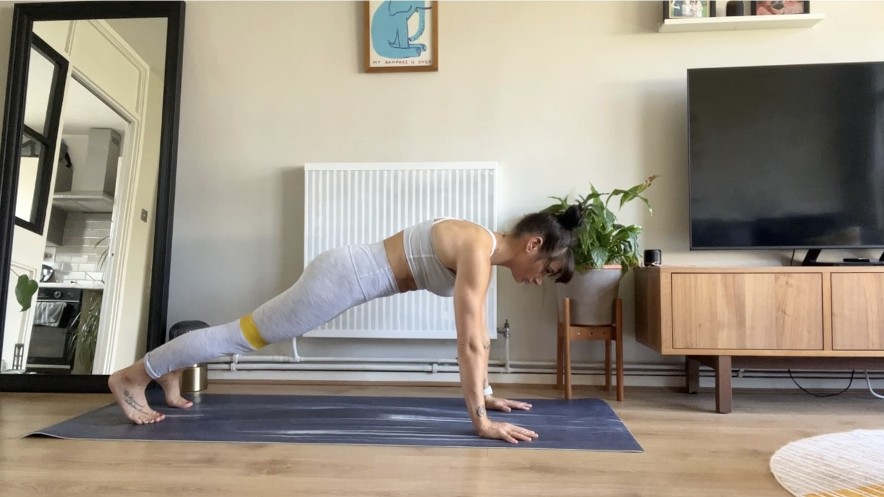
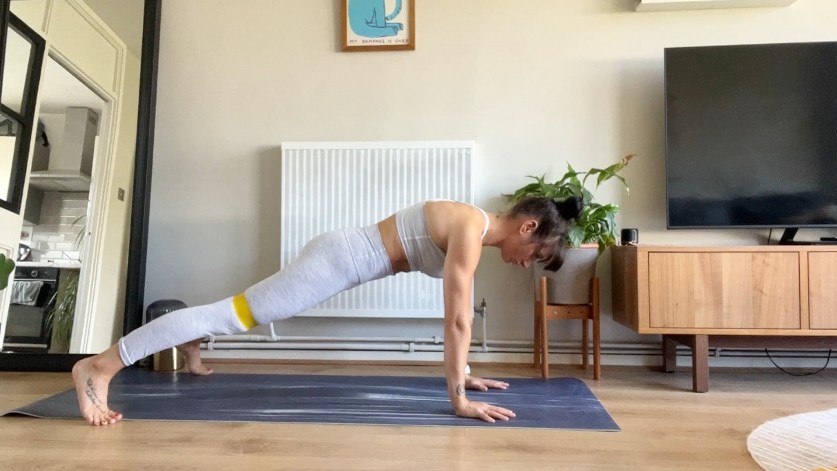
If you’re still learning to engage your core properly, I recommend stepping out rather than jumping to reduce the impact on your back and joints. I also recommend a medium-strength activation band just above the knees, or to make it even harder, above the ankles.
You should feel the outer glutes (the gluteus medius) engaging, as well as your hips, adductors (inner thighs), legs, torso and shoulders during plank jacks. Avoid letting your hips lift toward the ceiling or drop toward the floor.
- Start in a straight-arm plank position with your feet hip-width apart, shoulders stacked over the wrists and elbows and hips aligned with your shoulders
- Brace your stomach, glutes and quads
- Jump your feet outward to either side of your mat, keeping your legs straight and landing on the balls of your feet
- Jump back to your starting position
- Repeat until you hit your rep target
2. Resistance band mountain climbers
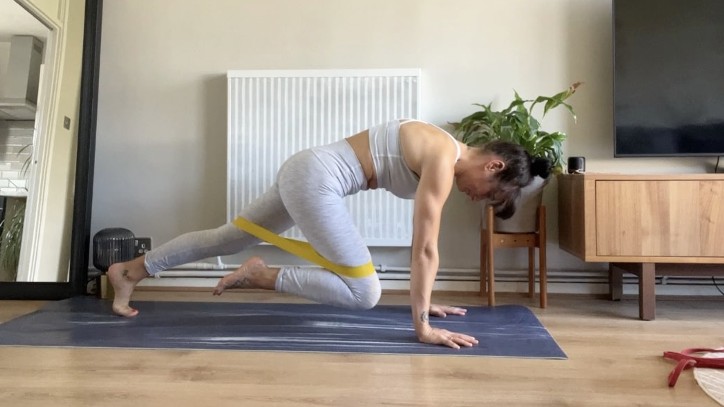
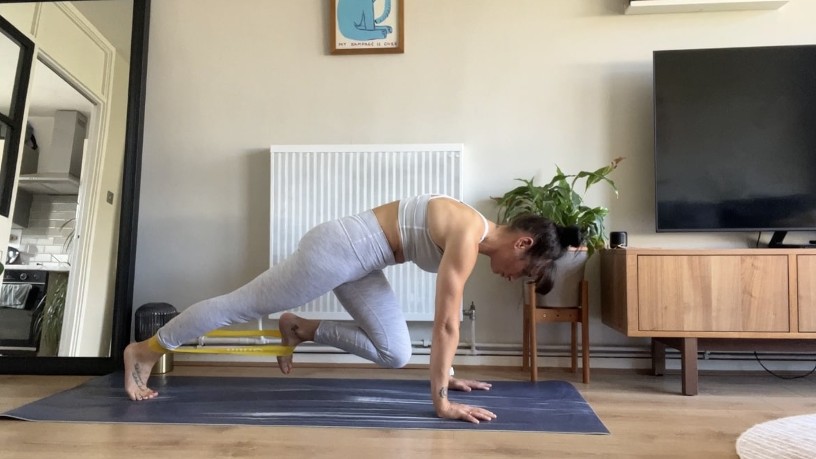
Banded mountain climbers ramp up your heart rate and work the whole body, including your abs. There are two ways to approach mountain climbers depending on your equipment; loop an activation band just above your ankles or knees (as pictured) or tie a power band to an unmoving object, step through the band and rest it against your hips facing away from the anchor point.
Sign up to get the BEST of Tom's Guide direct to your inbox.
Get instant access to breaking news, the hottest reviews, great deals and helpful tips.
- Start in a straight-arm plank position and set up for one of the banded options above
- Keep your shoulders over your wrists and hips aligned with your shoulders
- Brace your stomach, glutes and quads
- Draw your left knee toward your left elbow, then as you return to the starting position, draw your right knee toward your right elbow
- Build speed, always landing on the ball of your foot — imagine you’re performing this on a treadmill and using your foot to pull the treadmill back each rep
3. Resistance band plank tucks
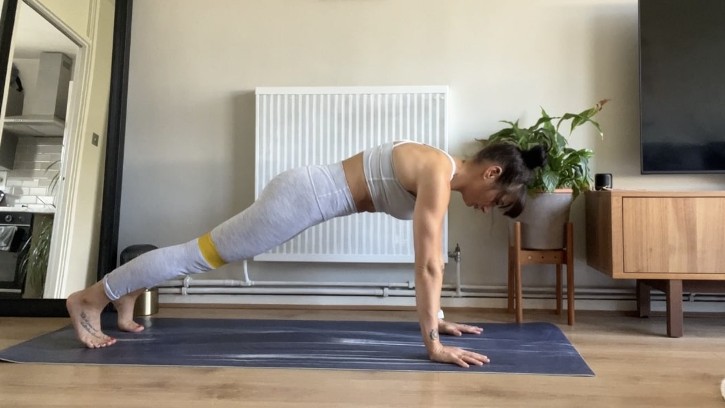
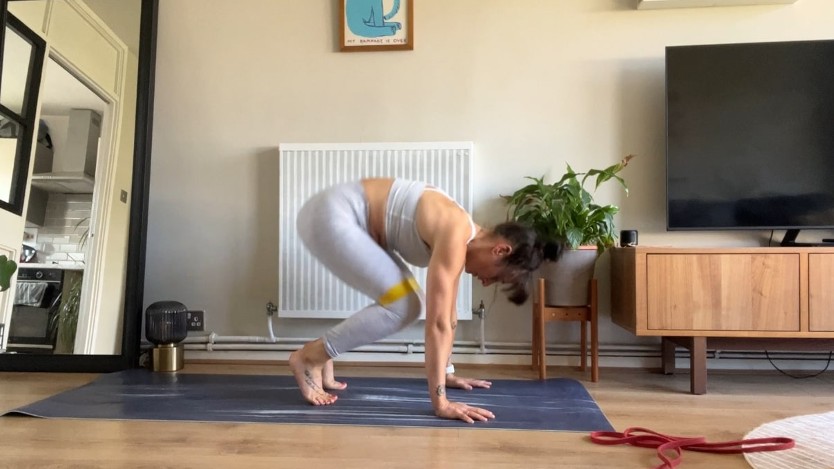
The exercise is similar to plank jacks, except you’ll jump your feet forward instead, creating a crunching movement through the front of your body, including your abs, hips and quads.
Plank tuck jumps also engage the upper body, including your chest, arms and shoulders to keep you stable, plus your legs, glutes and lower back. The purpose of the band in this case is to prevent your knees from turning in. Push against the band with both legs and drive your thighs outward.
- Start in a plank position, stacking your shoulders over the wrists and aligning your hips and shoulders
- Brace your stomach, glutes and quads
- Start on the balls of your feet, then jump both feet toward your chest, landing on the balls of your feet again at the front of your mat
- Keep your hands pressed into the mat
- Jump back to the starting position and repeat until you hit your rep target
4. Resistance band roll-ups
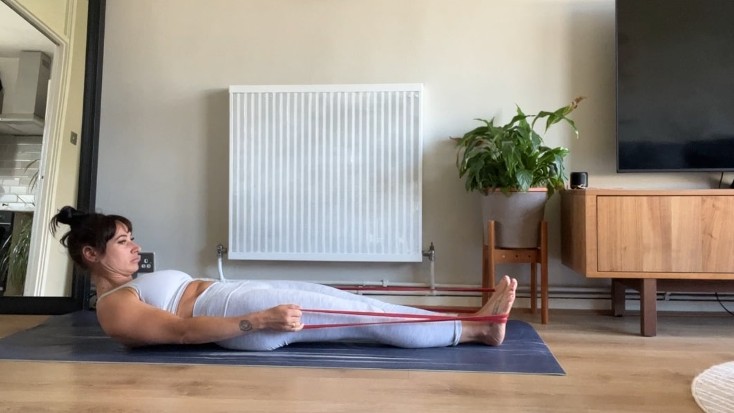
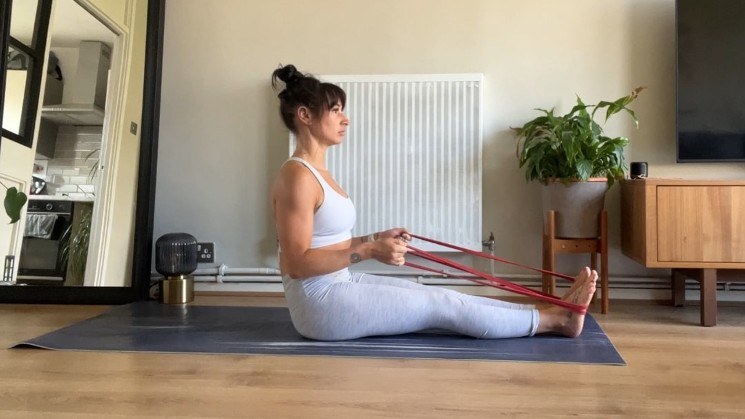
Roll-ups test your ability to use muscular control, strength and stability to roll your torso up and down while your legs are extended. The move builds spine and hamstring flexibility and strengthens your abs.
Once you feel comfortable with the exercise, wrap a power band over your feet and grip with both hands. Perform the same movements below while now gripping the band.
- Start laying on your back with both legs extended and your arms overhead
- Inhale, then as you exhale, brace your stomach, lift your arms first, then begin curling your torso upward to sit up
- Think about peeling your body away from the floor slowly while pressing the backs of your legs into the mat
- When you reach an upright torso position with arms outstretched, sit tall and pause
- Reverse the motion back down, rounding through the spine and slowly unfolding as you lower your back to the mat
- If you find the exercise too challenging, use some momentum to help you sit up to begin with
5. Banded leg raises
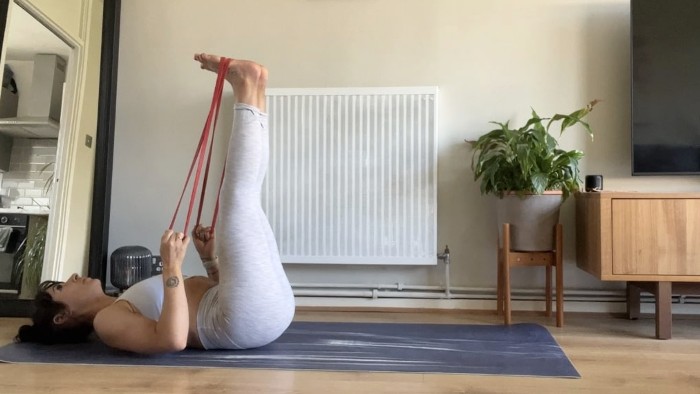
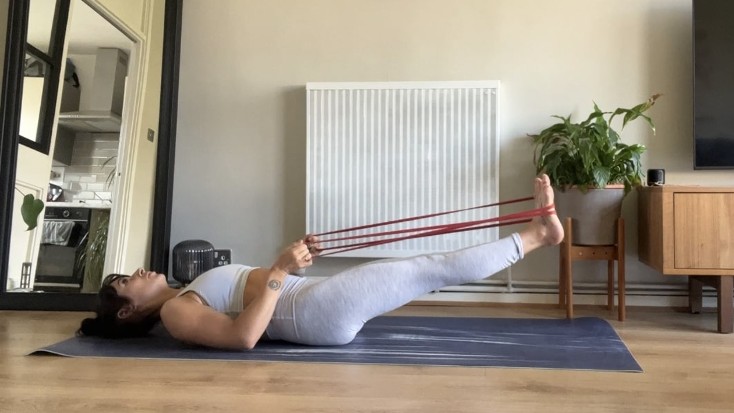
Learning how to do leg raises is great for your core and hips, helping to strengthen the front body, including your abs, hip flexors and quads. If you have tight hamstrings, softly bend your knees and focus on pressing your lower back into the mat beneath you.
I recommend a power band for banded leg raises; double wrap your band, place one end around the widest part of your feet, then grip the sides with both hands and lower onto the mat ready to begin.
- Lay on your back and slightly tuck your pelvis toward you to flatten your lower back
- Extend your legs into the air as straight as possible
- Ensure the band is wrapped with enough resistance for your muscles and keep a firm grip on the band
- Relax your shoulders and press them onto the mat
- Tuck your chin
- With control, lower your legs toward the floor as far as possible without dropping them onto the mat or arching your spine
- Pause, then use your stomach muscles to lift your legs upward to the starting position. Repeat
5-move resistance band abs workout to try

Either pluck some of these exercises to include in your existing core routines or try the five exercises as a circuit for five rounds of 45 seconds on / 15 seconds off.
- Plank jacks
- Mountain climbers
- Plank tucks
- Roll-ups
- Leg raises
Aim for 8-12 reps each round and more for the mountain climbers, which is a much faster-paced exercise. I like to count the reps I achieve in the first round and then challenge myself to maintain or beat those reps in the remaining rounds. Reduce or add rounds as necessary — as written, this is a 25-minute core workout.
More from Tom's Guide
- I'm a personal trainer who prefers strength training to bodyweight workouts — here's why I love this 20-minute calisthenics routine for beginners
- I added this 5-move ‘kettlebell flow’ routine to my workouts — here’s what happened
- I’m a personal trainer — this 3-move bodyweight workout builds full-body strength and boosts your metabolism

Sam Hopes is a level 3 qualified trainer, level 2 reiki practitioner and senior fitness writer at Tom's Guide. She is also currently undertaking her Yoga For Athletes training course. Sam has written for various fitness brands and websites over the years and has experience across brands at Future such as Live Science, Fit&Well, Coach, and T3.
Having worked with fitness studios like F45 and Virgin Active, Sam now primarily teaches outdoor bootcamps, bodyweight, calisthenics and kettlebells. She also coaches mobility and stretching-focused classes several times a week and believes that true strength comes from a holistic approach to training your body.
Sam has completed two mixed doubles Hyrox competitions in London and the Netherlands and finished her first doubles attempt in 1:11.
